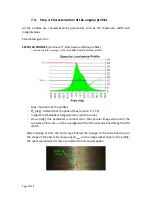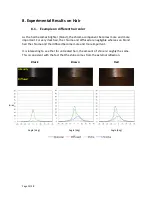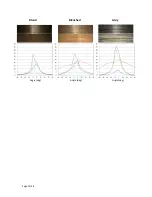
Page 12/38
PART 2: Technical background
5.
Introduction
5.1.
Polarization imaging
When illuminating an object, the light reflected is of different types. If the incident light
is linearly polarized, the specular reflection will keep the state of polarization whereas
the scattering light from the volume (diffused light) will be unpolarized. Using a
polarized illumination coupled to a polarization analysis makes possible the
differentiation between the specular and the diffused light.
The specular reflection gives information about how glossy or rough the hair is. The
diffused light will bring information about the hair color.
SAMBA acquires two states of polarization at video rate.
The diffused and specular images can then be calculated as follows:
The diffused image
I
d
= 2 x I
c
The specular image
I
sp
= I
p
– I
c
where I
p
is the light from the first state of
polarization and I
c
the light from the second state which is 90deg tilted.
Note that I
d
+ I
sp
= I
p
+ I
c
is the image delivered by a conventional camera or seen by the
human eye. Examples of polarization images acquired on a white glossy photo paper are
shown below.



























